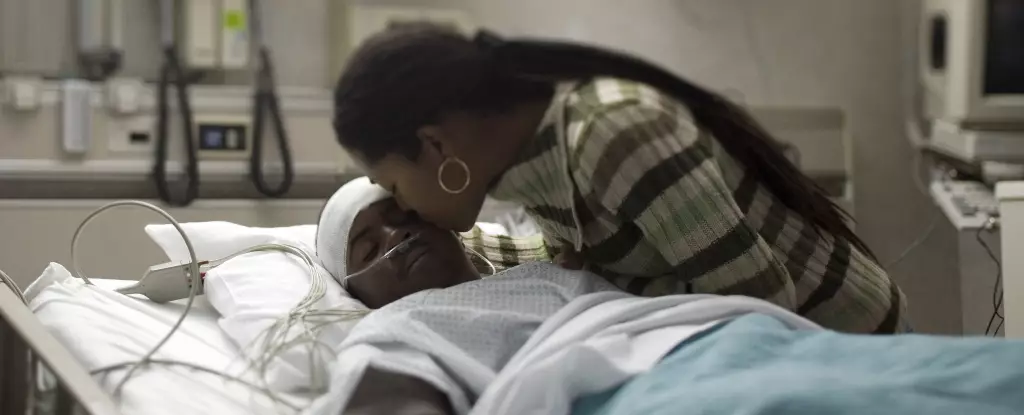In the fraught landscape of neurological disorders, comatose patients challenge healthcare professionals and families alike with an unnerving ambiguity. As loved ones gather in hospital rooms, patiently awaiting signs of recovery, families often find themselves grappling with the seemingly insurmountable question: Will my loved one ever awaken? Centuries of medical thought have equated coma with a sleep-like state, yet recent studies unveil a far more complex understanding of consciousness, particularly in patients deemed unresponsive. The research emerging from Columbia University and New York-Presbyterian offers a glimmer of hope in this realm of despair, suggesting that the enigmatic signs of hidden consciousness may surface when least expected.
At the heart of this promising research lies the employment of electroencephalography (EEG), a tool that measures the brain’s electrical activity. Traditional practices have struggled with the limitations of EEG, often yielding unreliable results. However, Columbia University’s latest findings refocus our attention to nighttime assessments, a period when the insights of the brain might be most profound. The resonance of the term “sleep spindles” encapsulates this unique phenomenon, indicating bursts of neural activity that transpire during non-REM sleep. Researchers hypothesize these spindles serve as indicators that vital pathways associated with consciousness remain intact, thus challenging our deepest assumptions about unconscious states.
By monitoring the electrical rhythms of 226 patients suffering from acute brain damage during regular overnight sessions, researchers seize the opportunity to circumvent traditional hurdles. They applied cognitive motor dissociation (CMD) tests simultaneously, scrutinizing how the brain responds even when behavioral responses falter. The interplay of sleep spindles and their correlation with CMD illustrates a pathway through which the darkness of coma might be penetrated. Significantly, the emergence of these spindles prior to signs of CMD signifies a potentially transformative leap forward in predictive medicine. This is not merely academic — it has real-world implications affecting families’ hopes, expectations, and planning, bringing a sense of structure to existential uncertainty.
Surprisingly, the data revealed that more than 40% of those exhibiting well-defined sleep spindles and successful CMD tests achieved consciousness before being discharged from the hospital. Even more remarkable is the statistic that over three-quarters of the patients regained neurological function within a year of observation. This does not promise an absolute path to recovery but suggests that hope lies in the details overlooked by traditional methods. Families yearning for reassurance in harrowing times can cling to these statistical gems, recognizing the extraordinary science unraveling before them.
The treatment implications of these findings spark an exhilarating conversation. The possibility of manipulating brainwaves to facilitate recovery, perhaps through neuromodulation techniques, fills a critical void in brain research. Jan Claassen, a neurologist at Columbia University, encapsulates the procedure’s potential by asserting that the processes underlying sleep spindles imply available circuits between the thalamus and cortex. If these circuits can be stimulated or enhanced, we stand on the brink of a paradigm that could not only predict recovery but actively catalyze it.
As the medical community stands at this precipice, it is vital to foster a dialogue that champions hope rather than despair. Families are understandably anxious as they seek clarity during prolonged uncertainty over a loved one’s condition, and it becomes imperative for practitioners to provide not just a prognosis but a sense of direction. As families await answers, the combination of EEG data and CMD testing emerges not as a final verdict but as a promising narrative of possible recovery. The path may yet be fraught with challenges, but with every revelation, we tear back the layers of consciousness to illuminate what it means to awaken from the shadows of the unconscious.

